Effective Geo-Targeting Strategies for Betting Campaigns in 2025
06.10.2025
Effective Geo-Targeting Strategies for Betting Campaigns in 2025
06.10.2025The betting landscape in 2025 rewards precision over volume; success comes from reaching the right person in the right place. Geo-targeting now defines how brands communicate, balancing compliance with strict local laws and the demand for tailored offers. Campaigns that adapt to neighborhoods, stadiums, or even single postcodes instantly gain a competitive edge. For operators and those working in affiliate marketing, this shift opens direct paths to reduce wasted spending and drive conversions higher. Precision is no longer optional; it stands as the core of growth in a crowded and highly regulated market.
Core Strategies for Location-Based Betting Campaigns
Geo targeting is no longer optional; it defines how betting brands operate in 2025. Rules differ by jurisdiction, so ads must adapt to city, county, or neighborhood levels. This precision reduces wasted spending, filters unqualified traffic, and prevents compliance risks. In the iGaming industry, strong geo logic ensures campaigns only reach users who can legally play and deposit.
Modern players also expect relevance. Generic ads lose attention quickly, while local cues build trust and credibility. Matching language, culture, event schedules, and betting habits makes campaigns sharper. For sports betting operators, this reduces acquisition costs, raises targeting accuracy, and keeps offers aligned with regulations.
Personalized Content Adapted to Local Culture and Language
Localization makes ads feel authentic and credible. Adjustments may include:
- • Referencing team nicknames, derby matches, or local rivalries.
- • Showing payment options valid in that region.
- • Publishing support hours in local time.
- • Creating unique headline sets for each city.
- • Placing “21+ only” and license details prominently.
Together, these touches make iGaming content feel accurate. Visitors see familiar details, which lowers bounce rates and boosts conversions.
Event-Based Targeting During Live Sports and Tournaments
Live events open narrow windows of higher performance. Operators can act by:
- • Activating ad sets within 100–300 meters of stadiums.
- • Scheduling bursts two hours before kickoff, at halftime, and after the match.
- • Raising bids by up to 25% for finals and lowering them for preseason.
- • Updating creative instantly after player or odds changes.
- • Limiting impressions to three to five per user during a game.
This structure keeps campaigns timely, avoids fatigue, and ensures location based ads remain effective.
Local Signifiers and Regional Relevance in Ad Copy
Small regional markers can strongly influence clicks. Useful steps are:
- • Adding phrases like “Available in New Jersey” or “Ontario licensed”.
- • Displaying local banking logos or payment icons.
- • Using team colors or stadium mentions without breaching trademarks.
- • Linking sitelinks to city-specific landing pages.
- • Showing disclaimers and responsible play messages at the top.
These signals give ads immediate authority. They cut unqualified traffic, aid compliance, and improve your marketing efficiency by focusing spending on high-value regions.
Leveraging Location Data and Advanced Technology
Precise targeting in betting is no longer built only on keywords or age filters. Operators now use location signals to refine where and when ads appear, and this shift has transformed gambling advertising. GPS data, Wi-Fi, and cellular towers together make it possible to identify a user’s position within a few meters. That accuracy means ads can be turned on or off with city-block precision, keeping campaigns compliant and effective.
Technology also changed the way consent is handled. Every app or site must clearly ask before tracking location. This forced teams to rely more on their own verified data and server events, ensuring better control over targeting. The outcome is clear: more reliable geo targeted campaigns, less wasted spending, and stronger protection against violations.
Geofencing Around Casinos, Stadiums, and High-Traffic Areas
High-interest locations can be turned into precise digital zones. Ads only run when potential players step inside these areas. Key actions include:
- • Setting fences of 100–300 meters around stadiums.
- • Narrowing to 30–50 meters near casino doors or cashier spots.
- • Scheduling bursts two hours before kickoff and at halftime.
- • Blocking highways and border roads to stop spillovers.
- • Limiting impressions to three to five per user daily.
- • Recording fence IDs and times for audit proof.
These steps keep campaigns focused, compliant, and cost-efficient.
Proximity Marketing Through Bluetooth and Wi-Fi
Short-range signals fill gaps where GPS falls short. With consent, they deliver accurate prompts indoors. Effective uses are:
- • Placing beacons with 10–30 meter reach in arenas or shops.
- • Using Wi-Fi sign-ins to display targeted prompts.
- • Sending rules, guides, or help links instead of hard promos.
- • Rotating beacon IDs weekly to reduce overexposure.
- • Offering a clear one-tap opt-out option.
- • Saving only hashed tokens with expiration dates.
This works well for sportsbooks and casino zones. In some markets, free spins can be highlighted, while page push keeps users active after leaving.
Location-Based Push Notifications for Real-Time Offers
Push tools let brands act within minutes of key changes. Used carefully, they keep messages timely and relevant. Best practices include:
- • Filtering audiences by city and eligibility before sending.
- • Limiting to two alerts per event with quiet hours.
- • Triggering during kickoff, halftime, or payout updates.
- • Linking directly to the right market or cashier.
- • Tracking opens, deposits, and spend by city.
- • Keeping “manage notifications” visible in every alert.
When apps are absent, web-based push ads fill the gap. Sports fans expect instant updates, while an online casino audience values quick payments and clear age checks.
Operational Tactics for Smarter Campaign Management
Precision targeting delivers results only when daily operations are managed with clear structure and discipline. In the iGaming industry, teams now connect bidding rules, geographic filters, and performance data in real time across multiple channels. They track every action against CPA, FTD, ARPU, and churn, making decisions faster, more transparent, and easier to optimize.
Moreover, budgets are no longer placed in one large pool but distributed strategically across city tiers. Areas with stronger deposits and higher LTV receive higher bids and more creative testing, while weaker zones are limited to small controlled trials. This method keeps marketing campaigns flexible, scalable, and consistent even when dozens of regions run simultaneously.
Audience Segmentation and Demographic Insights
Campaigns perform better when audiences are split by real behavior instead of broad labels. To refine groups, operators use:
- • Regional and license status to confirm eligibility.
- • Language and device preferences for smoother access.
- • Betting vs. slot interest.
- • Lifecycle groups such as new, active, reactivated, and high-value.
- • Funding history and payment methods.
- • Time-of-day activity tied to sports calendars.
This way, ads speak directly to your audience, reflecting real habits, boosting efficiency, and cutting wasted spend.
Selecting Specific Cities, Regions, or Zip Codes
Targeting entire countries wastes money, so narrowing to smaller zones works better. Operators achieve this by:
- • Adding city lists with 5–10 km border buffers.
- • Grouping low-density zips for delivery stability.
- • Creating ad sets for cross-border metros.
- • Dropping pins on stadiums or transit hubs.
- • Adjusting city bids by −20% to +30% based on ROI.
- • Tagging each click with its city or zip.
This detail also helps an online casino affiliate deliver correct offers region by region.
Dynamic Keyword Insertion for Local Relevance
Because search terms shift quickly by region, dynamic insertion keeps ads relevant without endless duplication. Effective steps include:
- • Combining betting terms with city names or team references.
- • Syncing ad headlines with tokens on landing pages.
- • Showing the right currency and payment icons.
- • Rotating headline sets for major cities.
- • Refreshing copy every 7–14 days.
- • Tracking CPC and quality score by city.
This method keeps ads aligned with local searches and increases accuracy while avoiding waste.
Excluding Low-Performing Areas to Save Ad Spend
Weak regions drain budgets, so exclusion is essential. Operators usually:
- • Cut zips missing FTD targets for two weeks.
- • Drop areas with the lowest ARPU.
- • Block zones with repeated chargebacks or failed KYC.
- • Reduce impressions in nightlife districts late at night.
- • Pause traffic with high bounce or bot signals.
- • Retest paused cities at lower bids before reactivation.
Applying these filters across all channels, including direct click, frees budget for stronger markets and raises overall performance.
Tools and Platforms to Optimize Geo-Targeted Ads
Running geo-focused campaigns without the right systems quickly leads to wasted spending. As markets grow, manual adjustments are not enough, which is why specialized geo targeting tools are now central to efficient workflows. They allow operators to manage bids, control reach, and keep reporting aligned with regulatory demands.
In practice, optimization means more than toggling a city on or off. Tools integrate audience data, device signals, and timing into a single framework. This lets marketing campaigns scale from a few test locations to dozens of cities while still keeping spending under control. Furthermore, shared naming and reporting across channels like search, display, and social media ensures consistency.
Using Google Ads and Facebook Ads Geo Features
Search and display provide the sharpest geo controls. Google Ads lets operators target by physical presence, not just interest. Useful steps include:
- • Applying city or zip lists with strict presence settings.
- • Dropping pins around arenas and adjusting bids during events.
- • Using responsive ads with dynamic city names in headlines.
- • Linking sitelinks to localized landing pages.
- • Adjusting bids by −20% to +30% at the city level.
- • Logging every change with timestamps for audits.
Facebook adds city and zip targeting with age and language filters. Combined, these targeting tools offer both accuracy and scale.
Mobile Advertising Tools for Gambling Affiliates
Betting often happens on the move, so mobile delivery is vital. Networks with carrier, device, and location filters keep targeting precise. Core practices include:
- • Choosing networks with detailed carrier and device options.
- • Limiting impressions to five per user daily.
- • Routing traffic by state or province through smartlinks.
- • Screening visits with fraud checks before spending.
- • Directing users to local pages with correct payments and age gates.
- • Enforcing quiet hours to avoid fatigue.
This method lets a casino affiliate stay compliant and profitable. Here, mobile geo targeting works as the backbone for effective campaigns.
Tracking, Testing, and Continuous Campaign Optimization
Optimization depends on steady monitoring and rapid changes. Server-side tracking with geo tags keeps results accurate. Effective routines include:
- • Running A/B tests on creatives and offers.
- • Rotating ad versions every 7–14 days.
- • Holding one control city each month for benchmarks.
- • Breaking results into CPA, FTD, ARPU, and churn by city.
- • Versioning landers with correct tokens and currencies.
- • Archiving old setups for full audit trails.
With these steps, teams react fast to dips and scale what works. Geo targeting tools turn optimization into a reliable system instead of guesswork.
Compliance, Budget Efficiency, and Risk Management
Legal standards and financial discipline shape every campaign as much as creative design or targeting precision. In 2025, operators rely on geo targeting not only to raise conversion but also to demonstrate full compliance across fragmented markets. Each impression is logged by time, region, and license reference, giving regulators transparency while campaigns maintain efficiency and control.
Meanwhile, advertising costs keep climbing, which makes structured budget allocation critical. Dashboards track CPA, ARPU, and churn for every city, so spend can be shifted within minutes. By blending strict financial routines with compliance safeguards, campaigns achieve profitability without risking sudden violations.
Staying Within Local Gambling Laws and Regulations
Regulations differ sharply by city or state, so ads must adapt in real time. Key practices include:
- • Keeping an updated list of approved states, provinces, or cities.
- • Enforcing presence-only filters to prevent cross-border spill.
- • Adding license IDs and 21+ markers to all creatives.
- • Saving change logs, reports, and screenshots for audit proof.
- • Respecting blackout hours when local laws demand downtime.
This makes delivery safer and more reliable. During live streaming, operators can pause or adjust ads instantly if local restrictions shift.
Age Verification and Responsible Targeting
Protecting minors is a fixed requirement, not an option. Common safeguards include:
- • Applying strict age brackets within each geo filter.
- • Running soft checks before deposits, followed by full KYC.
- • Offering deposit caps, timeouts, and self-exclusion tools.
- • Adding “manage alerts” links to every notification.
Combined with mobile geo, these steps allow ads to reach only verified users in licensed zones, reducing errors near borders and keeping campaigns compliant.
Optimizing Ad Spend for Maximum ROI
Budgets must follow performance closely to remain profitable. Effective tactics are:
- • Assigning 70% to top markets, 20% to tests, and 10% to reserves.
- • Pausing any ad set if CPA stays 30% above target for two days.
- • Raising bids in high-ARPU areas while cutting poor performers.
- • Blocking sources with repeated bots or fast-bounce traffic.
This approach strengthens returns and reduces leakage. Affiliate marketers often reintroduce qualified users through page push ads in licensed zones, combining reactivation with cost control.
Recent posts

Top Sports Betting Affiliate Programs in Finland – Complete 2025 Guide
Finland rewards careful planning and clear user paths. Hockey and football spikes shape weekly intent across search and social. In this context, sports betting affiliate…

Top Affiliate Programs and Networks in Estonia – Best Estonian Affiliate Marketing Opportunities
Estonia's online economy moves fast: quick company setup, SEPA payments, and multilingual teams. Publishers monetize cross-border traffic in retail, travel, finance, and affiliate casino programs.…

Editorial & Native Advertising in Affiliate Marketing in Finland – 2025 Guide
Finland’s affiliate marketing sector is integrating more sophisticated editorial reviews and native advertising techniques and strategies. Content and advertising integration systems provide alternatives to the…

